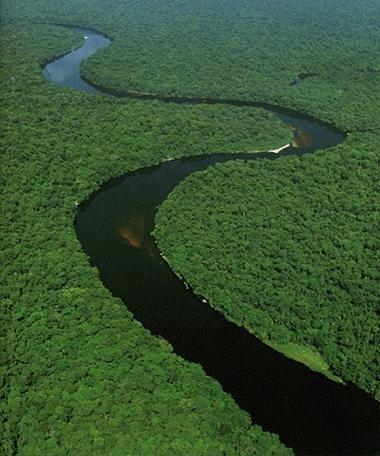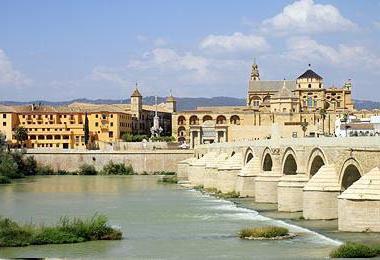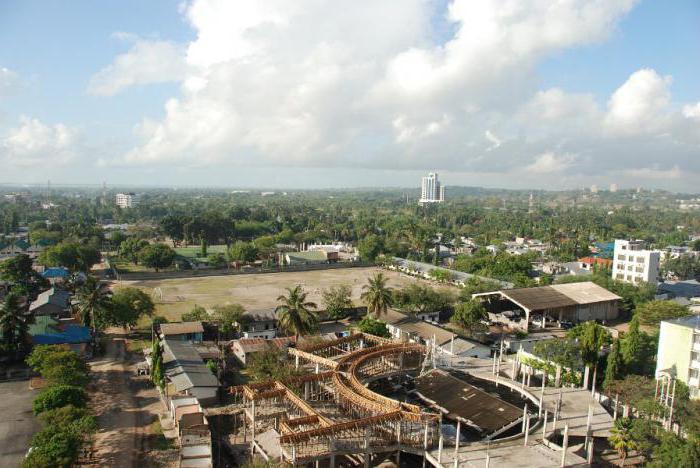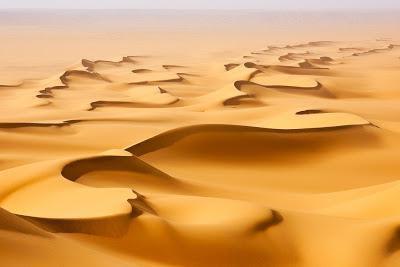Regions of Africa: states and cities
Within the Black Continent there are 60countries, including unrecognized and self-proclaimed states. The regions of Africa differ from each other in many respects: cultural, economic, demographic, etc. How many of them are allotted on the mainland? Which countries are they related to?
Features of the macro-zoning of the continent: the regions of Africa
Each of the African countries is unique and distinctive. However, some common features between these states (natural, historical, social and economic) allow geographers to divide the continent into several large regions. In total there are five, according to the generally accepted UN classification.
All regions of Africa are listed below:
- Northern;
- Central, or Tropical;
- South;
- Western;
- East Africa.
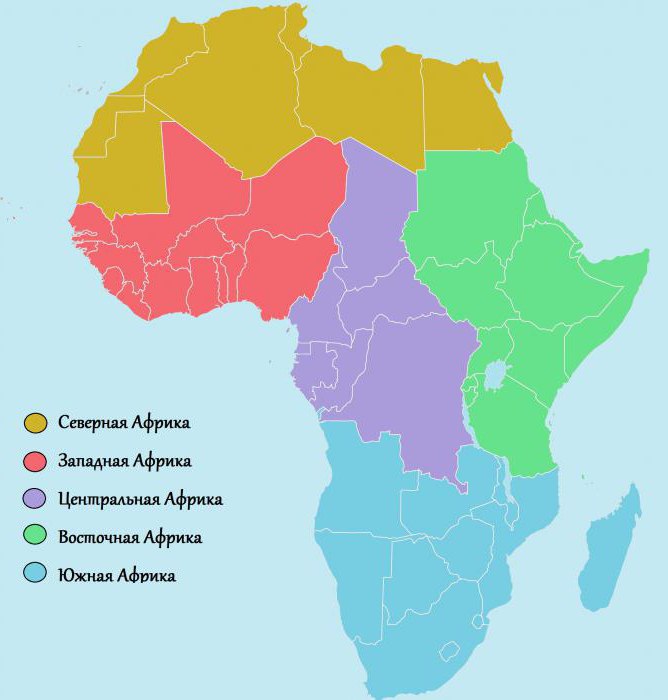
Each of the above-mentioned macro regions coversa number of countries in the relevant part of the continent. So, the leader in the number of states is the Western region. And most of them can boast an outlet to the World Ocean. But North and South Africa are the largest regions of the mainland by area.
Most countries in the Easternyears show a significant increase in GDP per capita. In turn, the central part of Africa has concentrated on its vast expanses the world's poorest and most backward countries in the economic and scientific world.
It should be noted that not all takethe existing regionalization scheme proposed by the UN. So, for example, some researchers and travelers are allocated a region such as South-East Africa. It includes only four states: Zambia, Malawi, Mozambique and Zimbabwe.
Further, we will examine in more detail and describe all regions of Africa, indicating their largest countries and cities.
North Africa
The region covers six sovereign states andone partially recognized: Tunisia, Sudan, Morocco, Libya, Western Sahara (SADR), Egypt and Algeria. North Africa, in addition, also includes several overseas territories owned by Spain and Portugal. The countries of this region are characterized by relatively large areas.

Almost all states in North Africa havewide access to the Mediterranean. This fact played a significant role in their development, indicating rather close economic ties with European countries. Most of the population of the region is concentrated in the narrow coastal strip of the Mediterranean, as well as in the Nile Valley. Waters of the Red Sea wash the shores of two more states in this region: it is about Sudan and Egypt. On the map of North Africa, these countries occupy the extreme eastern position.
The average GDP per capita in theregion is not so high. However, according to IMF forecasts, in the near future they will only increase. The poorest country in macro-regions is the Sudan, and the most wealthy - oil producing countries Libya, Tunisia and Algeria.
North Africa is quite developed(by African standards) agriculture. Here grow citrus fruits, dates, olives and sugar cane. This region is also popular with travelers. Countries such as Egypt, Tunisia and Morocco are visited annually by millions of tourists from all over the world.
The largest cities in the region are Casablanca, Tunisia, Tripoli, Cairo, Alexandria.
Algeria and Egypt on the map of Africa: interesting facts
Egypt is a state within whichone of the oldest world civilizations arose. It is a country of mysterious pyramids, secret treasures and legends. She is the absolute leader on the entire Black Continent for the development of the recreational and tourist sphere. Every year, Egypt is visited by at least 10 million tourists.
Not everyone knows that this countryis one of the most industrialized on the mainland. Oil, gas, iron and manganese ores, gold, coal, etc. are actively mined and processed here. The chemical, cement and textile industries work effectively in the industrial sector.
No less interesting state in the NorthAfrica is Algeria. This country is the largest on the continent in size. Curiously, this honorary title was received only in 2011, when the Sudan fell apart. In addition to this record, Algeria is interesting and other facts. For example, did you know that:
- about 80% of the territory of Algeria is occupied by the desert;
- one of the lakes of this amazing country is filled with real ink;
- on the territory of the State there are seven UNESCO World Heritage sites;
- in Algeria there is not a single "McDonald's" and an Orthodox church;
- Alcohol here is sold exclusively in specialized stores.

In addition, Algeria amazes travelers with the diversity of its natural landscapes. Here you can see everything: both mountain ranges, and dense forests, and hot deserts, and cool lakes.
West Africa
This African region is absoluteleader in the total number of independent states. There are 16 of them: Mauritania, Mali, Niger, Nigeria, Benin, Ghana, Gambia, Burkina Faso, Guinea, Guinea-Bissau, Liberia, Cape Verde, Côte d'Ivoire, Senegal, Sierra Leone and Togo.
Most of the countries in the region are underdevelopedstates with low GDP. A certain exception from this list can be called Nigeria. The IMF forecasts for this region are disappointing: GDP per capita in the short term will not grow.
Almost 60% of the West African population is employed inagriculture. Here, on a large scale, cocoa powder, wood, palm oil is produced. The manufacturing industry is sufficiently developed only in Nigeria.
The main problems of the region include the following:
- poor development of the transport network;
- poverty and illiteracy;
- presence of a large number of language conflicts and hot spots.
The largest cities in the region are Dakar, Freetown, Abidjan, Accra, Lagos, Abuja, Bamako.
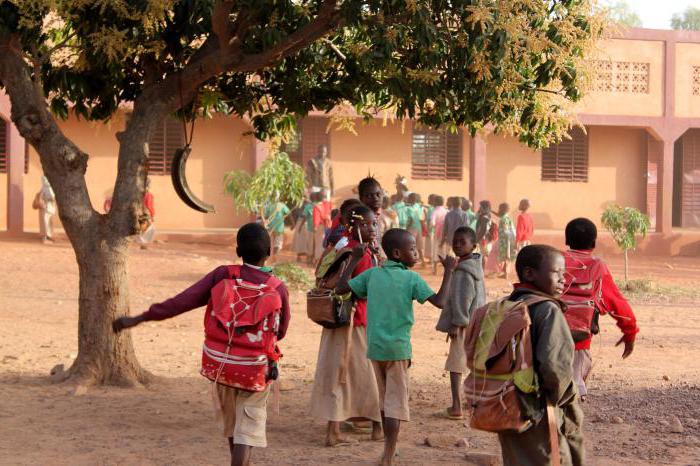
Central Africa
Central Africa is eight countries,(Chad, Cameroon, Gabon, CAR, the Republic of the Congo, DR Congo, Equatorial Guinea, and the island state of Sao Tome and Principe). The poorest country in the region is the Democratic Republic of the Congo with an extremely low GDP: $ 330 per capita.
In the economy of the macro region the leading positions are occupied byagriculture and mining, the remaining countries inherited from colonial times. Here, gold, cobalt, copper, oil and diamonds are mined. The economy of Central Africa has been and remains a commodity economy.
A significant problem in the region is the presence of hot spots and periodic military conflicts.

The largest cities in the region are Douala, N'Djamena, Libreville, Kinshasa, Bangui.
East Africa
This region covers ten independent countries(Eritrea, Djibouti, Ethiopia, Somalia, Kenya, Uganda, Tanzania, Burundi, a country with a beautiful name Rwanda and newly formed Southern Sudan), as well as several unrecognized state entities and dependent territories.
East Africa is a region with youngstates, backward economies and the predominance of monocultural agriculture. In some countries, piracy is flourishing (Somalia), and armed conflicts (both domestic and between neighboring countries) are not uncommon. In some countries the tourism industry is quite well developed. In particular, in Kenya or Uganda tourists come to visit local national parks and get acquainted with the wildlife of Africa.
The largest cities in the region are Juba, Addis Ababa, Mogadishu, Nairobi, Kampala.

South Africa
The last macro-region of the continent includes10 countries: Angola, Zambia, Malawi, Mozambique, Namibia, Botswana, Zimbabwe, South Africa, as well as two enclaves (Lesotho and Swaziland). To this region is also often referred to Madagascar and the Seychelles.
The countries of South Africa differ from each other inlevel of development and GDP. The most economically developed state in the region is the Republic of South Africa. South Africa - an amazing country that has just three metropolitan cities.
Tourism is well developed in somestates of the region (primarily in South Africa, Botswana and the Seychelles). Swaziland attracts many travelers with well-preserved culture and its colorful traditions.
The largest cities in the region are Luanda, Lusaka, Windhoek, Maputo, Pretoria, Durban, Cape Town, Port Elizabeth.

Conclusion
All countries of the African continent are original,extremely interesting and often so unlike each other. However, geographers could still group them according to historical, socio-economic and cultural criteria, singling out five macro-regions: North, West, Central, East and South Africa.
